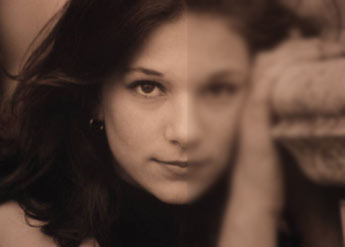 We’ve all heard the idiom, “beauty is in the eye of the beholder.” Generally, we understand it to mean that what one person may find beautiful, another one might not. The implication is, then, that beauty does not exist except in relative worlds. I consider this implication too dismissive. Even so, it is true that some people are said to have a more artistic and “appreciative” mind. These people are able to find beauty in abstract or traditionally “ugly” or “neutral” things. Take, for example, the plastic bag floating around in the wind in American Beauty (2000). Not everyone would have considered that “beautiful” or “intriguing.” While I don’t pretend to offer an explanation for these differences of opinion, I do intend to offer a speculation as to what beauty is.
We’ve all heard the idiom, “beauty is in the eye of the beholder.” Generally, we understand it to mean that what one person may find beautiful, another one might not. The implication is, then, that beauty does not exist except in relative worlds. I consider this implication too dismissive. Even so, it is true that some people are said to have a more artistic and “appreciative” mind. These people are able to find beauty in abstract or traditionally “ugly” or “neutral” things. Take, for example, the plastic bag floating around in the wind in American Beauty (2000). Not everyone would have considered that “beautiful” or “intriguing.” While I don’t pretend to offer an explanation for these differences of opinion, I do intend to offer a speculation as to what beauty is.
Traditionally, beauty is considered a solely physical trait to which we respond to subconsciously. We perceive something (e.g., a person, a painting, a tree, a bike, etc.) in the physical world, light reflects off of the object and enters our eyes, subsequently sending messages to our brain, which may cause an increase in serotonin levels. We then experience a physical excitement that is interpreted as “I just saw something attractive.” There’s always a physical reaction to the beautiful. For those who enjoy sunsets, they never perceive a sunset without a sense of awe. The question is: Is this response a reaction to the mere physical beauty or is there something more?
Take static art, for example. In a study of paintings, pictures, photographs, or whatever, the focus isn’t primarily on colour, medium, or even the subject matter. While all these elements work together to form a final effect, the ability of the artist to capture the spirit of the purpose is much more important. Andrea del Sarto was an amazing technical painter, perhaps the best that there ever was, but he lacked spirit, which left him in near obscurity. The most prominent composers are able to capture emotion in their music, a good example being Vivaldi’s Le Quattro Stagioni. The most successful musicians are able to effectively convey those passions.
For anyone not artistically or musically oriented, this could sound like a bunch of hooey. So let me take this to a more basic and universal level.
Despite differences of opinion, a beautiful person can be generally accepted by all as a beautiful person. I’m not talking about Paris Hilton types here (i.e., those who have a sexual aura that is appealing to some people). I’m talking about truly beautiful women such as Catherine Zeta-Jones and beautiful men such as George Clooney. Of course, we all have our preferences. For example, I consider Al Pacino to be the most gorgeous actor alive, and I’m not too keen on Brad Pitt. Most of my friends, on the other hand, think the opposite, yet we can still understand each other’s opinions. In short, preferences aside, there is a certain universality to beauty. My belief is that, much like art, the spirit is what infuses a person with true beauty.
Let’s say that a perfect person existed, whom had all their features sculpted to perfection. Not too thin, not too big, dreamy eyes, nice nose, and good jaw line. All features “perfect.” But, let’s also say that this person never smiled, was openly cruel and flamboyantly vain. Would people still find him or her beautiful? I find it unlikely. Why? For the very same reason that someone who is considered unattractive by many people can still look beautiful to friends, family, and a significant other. What’s on the inside counts, because it affects how we see the outside.
Even a flash glimpse of a person can tell you something about him or her. However, we won’t know everything, and there’s always a possibility that we saw the person on a bad day. Nevertheless, it is still possible to get an idea of his/her attitude towards life, others, and themselves. These are automatic, subconscious reactions that we respond to in the unity of inner and outer beauty. This also accounts for flash judgments in which context, lighting, mood, etc. affect our perception, which is why models and photographers are successful at getting a message (or messages) across with a single picture.
Can we find snobby people beautiful? Of course. But I suspect that it’s because we’ve seen them in other contexts in which they were not snobby. A good attitude, even for a moment, can be a saving grace. Of course, everyone looks different, has their faults and imperfections. But the point is, you don’t have to be “perfect” to be considered beautiful. Far from it. You don’t need a “perfect” waistline, “perfect” nose, or “perfect” hair for people to admire you. Attitude and inner beauty are not insignificant notions. These are what truly emphasize physical beauty and what we subconsciously react to.
Remember, perfect people don’t exist. The notion of perfect beauty is a fabrication of pop culture. You are beautiful the way you are.
Reference
Mendes, S. (Director) (2000). American Beauty [DVD]. Dreamworks Video.

